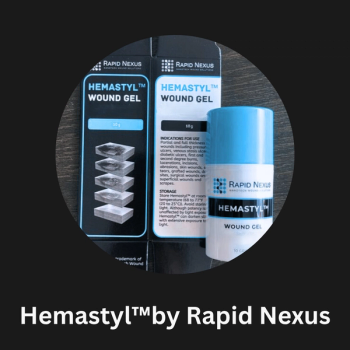
How an ESOP can help your practice remain independent
If your practice is looking for a way to not fall into the clutches of private equity or the local health system, then an employee stock ownership plan may be right for you
Independent medical practices are facing a slew of competitive pressures, all while trying to keep their facilities and technology upgraded to meet ever-increasing patient demands. Many practices don’t see a path forward when it comes to maintaining their independence and end up
Medical Economics talked to Michael Bannon, vice president,
Medical Economics: In general terms, what is an ESOP?
Mike Bannon: Simply put, an ESOP is a qualified retirement plan that allows employees to own stock or earn stock within their employer. So, in this case, we're talking about medical practices or MSOs. From a physician’s perspective, it's a liquidity and diversification plan. A physician-owner can sell their stock to an ESOP at fair market value, so it’s comparable to what a private equity firm would pay, and sell that stock to receive cash proceeds and diversify their personal net worth. It's also a succession plan. It puts a guide path together for those leading physicians to transfer over the reins of ownership or reins of leadership to the next generation of physicians, while also preserving the legacy of the medical practice that's been built up throughout their careers. And then finally, it's an independent platform for growth for those physicians. When you sell to an ESOP, there's a number of tax incentives and benefits that we'll talk about in a minute, that allow physicians to unlock up to 50% of their cash flow that can be invested into resources, growth, etc. That is highly needed in a competitive environment such as we're in right now with medical practices. And then on the other side of the coin is from the employee’s perspective. From an employee's perspective, it's an opportunity to share in the equity, upside, and growth of medical practice, or MSOs, they work for. Most importantly, employees do not have to pay for the stock that they earn; they earn it through service, investing over time. And so needless to say, it becomes a very valuable recruiting and retention tool for staff within the health care industry.
Medical Economics: If the employees own stock, do they have voting rights? Do they have any control over what happens with the practice?
Bannon: It's important to note that the employees do not own the stock directly through an ESOP. What actually happens is the stock that a physician-owner sells is sold into a trust. And then the employees that are eligible become beneficial owners of that stock over time. An independent trustee is brought in to govern that trust and ensure that the ESOP is managed in compliance with all the regulatory requirements and laws that have been put in place by Congress. But the employees who earn that stock over time receive a retirement benefit. It doesn't change management decisions or governance decisions day to day; the employees are represented by that trustee to ensure that their interests are being met fairly by the employer, and so that's really how it operates.
Medical Economics: What are the biggest financial and tax benefits of an ESOP?
Bannon: ESOPs have been around since 1974, and since then, Congress has continuously added more and more tax incentives to encourage employee ownership or ESOPs. And so today in the world that we're talking about, we have tax benefits or advantages for all of the stakeholders involved, including the selling physicians, the medical practice or episode that is being sold, and the employees. So from a physician's side, when you sell to an ESOP, you can defer and potentially eliminate the capital gains tax that would otherwise be due in any sort of third party sale, such as, for example, to private equity health system. From the MSO, or corporate perspective, the company that is being sold, in this case, medical practice, or MSO, receives
Medical Economics: Can the owner of an ESOP sell to another entity such as private equity if the firm makes an offer that is too good to refuse? And if so, what happens to the ESOP? What happens to all that stock to the employees and their ownership?
Bannon: Most ESOPs, if it's well designed, there's no need to sell to a third party. But that's obviously understanding that there's many market conditions that can change, or the objectives of the practice can change over time. In fact, many, ESOPs themselves become quite acquisitive, and implement their own roll-up strategy that kind of reflects what private equity has done within the health care and medical industry. Selling to an ESOP does not take that option off the table. So, if you come across an offer that is too good to refuse with an extremely high multiple, everyone is taken care of, it aligns with your objectives and goals, then the board of directors can always decide to sell to that third party. In that instance, any equity that is still held by the physician-owners would be cashed out just like a third party sale, and then the remaining balance that is owned by the ESOP would be cashed out, and those cash proceeds would be put into individual retirement plans for the employee participants. So again, it does not break the tax deferral strategy for the employees themselves; they can continue to build up that cash reinvested in a tax-deferred retirement plan.
Medical Economics: Who's the best candidate for an ESOP in terms of revenue numbers or employee numbers?
Bannon: This is a hard question. There are a lot of different variables involved, for example, overhead cost structure, management capabilities, collection rates. But in general, I would say when you're thinking about an ESOP, you want to have a succession plan in place. So if you're a solo practitioner, and you're looking to retire in the near term, and no one is taking over your patient population and continuing to generate that revenue and ultimately profitability going forward, then it's probably not a good solution for you. You need a sustainable medical practice, one that has a younger generation of physicians that are coming in to see the patients that retiring physicians are leaving with the practice as they retire or leave. Also, there is a size component. And so generally speaking, I'd say rule of thumb, maybe net revenue of about $30 million to $35 million, is probably the beginning point of where you'd start thinking about an ESOP. So in that case, you might be a highly profitable, closely held medical practice or medical practice with multiple partners, that is built out over time.
Medical Economics: If someone is a good candidate, and this is of interest to them, what are the steps to becoming an ESOP? What has to happen?
Bannon: I'd say the first step is always making sure you understand what an ESOP is, and the best way to do that is to talk with an ESOP advisor that understands your objectives, your industry, and the options available to you. After that initial consultation or discussion, if your objectives and the facts and circumstances align with an ESOP solution, then the next phase would be to run an analysis -- build out a financial model that looks at the after-tax cash flows of the ESOP, post-transaction sale value, any capital raise that is necessary, and what the returns would be to selling positions and the new employee owners. And then ultimately, looking at that analysis, understanding it, asking questions, and making sure before you move into a transaction, that you know what you're getting into, and that that analysis or process should ensure that occurs.
Medical Economics: How long does that typically take from start to finish?
Bannon: It depends on the physician-owner and how quickly they want to move. Obviously, one or two conversations could be a couple of days, the initial analysis could typically be anywhere from 30 to 45 days to complete as information is gathered and processed and built out into a model and a proposed structure for the physician owners is created. The interesting part with these options, there's not one size that fits all. There are countless different ways you can be structured based off of the, as mentioned, facts and circumstances and shareholder objectives. And so that analysis is a critical part to understand those objectives and might take one or two conversations with the practice to understand what their goals are, and what type of ESOP would best address those goals, before you look at the results and and outcome.
Medical Economics: Once created, can an ESOP be dissolved? And what would be a reason for doing so?
Bannon: Most ESOPs are put in place planning to be a sustainable or permanent solution. As I mentioned before, if you get a third party offer that you can't refuse or the market conditions or objectives change, you can always sell to a third party, and at that point, these would be dissolved. Other times, if the medical practice or the industry has changed such that you want to terminate the ESOP, the stock can always be bought back from the ESOP trust, and at that point, you can terminate the ESOP, as well.
Medical Economics: The person or trustee overseeing the ESOP, is this typically a third party outside the company? Or can someone within the company be that trustee or official in charge,
Bannon: You can have an internal trustee, although we would not recommend it. You really want to have an independent trustee that does this day in day out, make sure that they completely understand how to run the due diligence process, value of the medical practice, work within the rules and regulations of ERISA as set out by Department of Labor, Congress and IRS, and the tax benefits involved. So I would say in any sort of sizable ESOP transaction that we're talking about here, you would definitely want to bring in an independent trustee to act as the responsible party for the employees’ interest.
Medical Economics: Is that person paid out of the ESOP?
Bannon: They're compensated by the MSO, or medical practice, post-transaction. The cost is not meaningful, especially in comparison to the tax benefits that the company receives. But it is paid as a corporate expense, just like any other other sort of professional party would be.
Medical Economics: What else do practice owners need to know about ESOPs?
Bannon: Over the last five to 10 years, there's been a lot of change within the medical industry, especially as health systems, medical, private equity firms, and vertically integrated insurance companies have begun to create a flurry of acquisitions activity and consolidation. I'm talking with lots of physician leaders across the country right now. And many of them, if not all of them, are dealing with the issue of, given that consolidation within the industry, how do our practice and our physicians compete with a private equity grab or an Optum, or Humana, for example, that is buying medical practices. And I would say, many are turning toward private equity as an option. I just want to make sure that they understand that there is a third option, which is the ESOP, which meets all of the goals and unlocks the resources that are necessary for technology investments, geographic growth, expanding the specialties that are offered by your practice, through the tax savings or corporate tax savings. An ESOP pays the equivalent of what a private equity firm or financial buyer will pay for a medical practice or MSO. There is an option through the ESOP to preserve the legacy of the practice that you have built up over time, and ensure that the next generation of physician leaders can retain equity upside or equity growth going forward as you continue to expand through those tax savings and investment of those tax savings. And then finally, it's an extremely powerful recruiting and retention tool that in the medical or health care industry has been extremely competitive from a talent perspective for staff. Once those staff members start to see the power of equity ownership, for sharing in equity ownership over time, it is a huge incentive to stay with the practice, and build up their careers within the practice, which yields dividends for the physician leaders, to the equity owners, and to the practice overall over a long period of time
Newsletter
Stay informed and empowered with Medical Economics enewsletter, delivering expert insights, financial strategies, practice management tips and technology trends — tailored for today’s physicians.


















